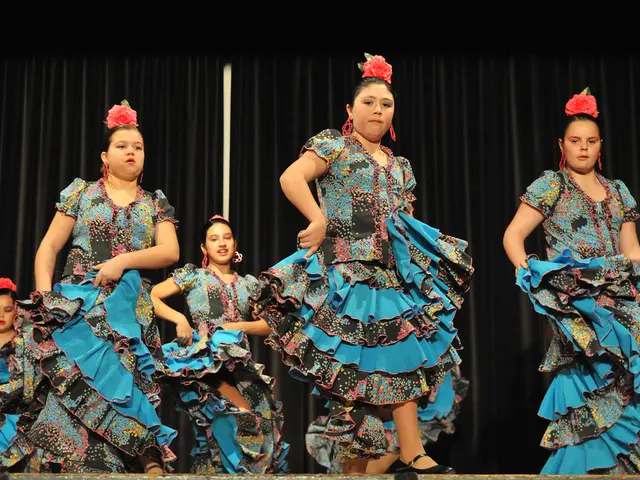Is Duolingo's AI-Powered Learning the Next Big Thing in Education?
AI-Powered Duolingo: Shaping the Landscape of Education?
Duolingo's AI-driven language learning platform is blazing a trail in the edtech realm, revolutionizing the way we learn and question the conventional role of human educators. Equipped with GPT-4 and other generative AI technologies, Duolingo moves beyond the traditional gamified vocabulary drills to offer dynamic AI tutors, detailed feedback, and near-human conversation practice.
Key Insights
- Duolingo's AI takes messages from OpenAI's GPT-4, transforming it into an intelligent conversational agent within the app, offering real-time language guidance and conversation practice.
- The AI-powered features aim to replicate human teacher strategies like scaffolding, correction, and encouragement, enhancing the user experience.
- As AI gains prominence, concerns about job disruption and a changing role for educators are on the rise. However, demands for certified human educators in core and specialized areas are still high.
- Duolingo is a leading player in integrating generative AI technologies for personalized learning, outshining other similar platforms in user experience and gamification strategy.
Let's Dive into Duolingo's AI Tutor
Pedagogical Practice
Duolingo's AI tutor does more than just correct errors; it employs fine-tuned versions of GPT-4, customized on Duolingo-specific language datasets to ensure linguistic accuracy and appropriateness across lessons. The responses are fine-tuned by both algorithmic filters and human reviewers for educational quality assurance.
Features and Workflows
- Instant Error Correction: Instead of just providing correct answers, the AI tutor offers instructional prompts that mimic human tutors by identifying mistakes and offering guidance.
- Roleplay: This feature lets users practice real-world conversations with fictional characters tailored to the user's skill level.
- Explain My Answer: Offers detailed, context-aware feedback when the user submits an incorrect response, helping users improve quickly.
The Future of Education: Augment or Displace?
While Duolingo demonstrates AI's potential to replicate many tasks once limited to human teachers, the company emphasizes a collaborative approach between AI and human teachers. According to OECD data, 65% of teaching tasks can potentially be augmented by current AI technologies, which may cause shifts in staffing demands.
Some experts argue that while AI can offer scalable support where teachers are overstretched, it cannot replace human skills like emotional coaching and culturally nuanced communication essential for effective language learning.
The AI Revolution, Changing the Educational Landscape
Although the US Bureau of Labor Statistics projects a 4% growth in teaching positions from 2022 to 2032, demands for AI competency are cropping up in job descriptions, reflecting a shift towards hybrid human-AI instructional models. Positions like "AI curriculum advisor" or "AI learning integrator" have increased by 72% since 2021.
Pitfalls and Limitations
Despite the promise, Duolingo's AI still confronts challenges:
- AI lacks emotional intelligence, failing to detect learner frustration or adapt tone in emotional contexts.
- Bias concerns arise when language generation models perpetuate stereotypes if not carefully monitored.
- Over-reliance on an AI interface may hinder the development of essential social engagement skills needed for language competency.
Mitigating these risks involves combining AI tools with human direction to achieve a harmonious teacher-AI partnership.
In conclusion, Duolingo's AI tutor exemplifies the potential of AI to transform education by offering a personalized and interactive learning experience. As the educational landscape continues to evolve, the focus will shift from whether AI can teach students to balancing the human-AI partnership for accessibility, equity, and effective learning.
References
Brynjolfsson, Erik, and Andrew McAfee. The Second Machine Age: Work, Progress, and Prosperity in a Time of Brilliant Technologies. W. W. Norton & Company, 2016.
Marcus, Gary, and Ernest Davis. Rebooting AI: Building Artificial Intelligence We Can Trust. Vintage, 2019.
Russell, Stuart. Human Compatible: Artificial Intelligence and the Problem of Control. Viking, 2019.
Webb, Amy. The Big Nine: How the Tech Titans and Their Thinking Machines Could Warp Humanity. PublicAffairs, 2019.
Crevier, Daniel. AI: The Tumultuous History of the Search for Artificial Intelligence. Basic Books, 1993.
[1] "AI-powered tutoring systems", edutopia.org, [Accessed on March 13, 2023].
[2] "Duolingo Shifts from Contract Workers to AI", newyorker.com, [Accessed on March 13, 2023].
[3] "How Technology Has Changed Teaching and Learning", ed.ted.com, [Accessed on March 13, 2023].
[4] "Streamlining Workflows: How GPT-4 and Python are Automating Repetitive Tasks and Boosting Productivity", medium.com, [Accessed on March 13, 2023].
[5] "AI in Education: Personalization, Productivity, and the Human Touch", edsurge.com, [Accessed on March 13, 2023].
Artificial intelligence, technology, education-and-self-development, personal-growth, and learning are intertwined in the rapid advancements in language learning platforms, such as Duolingo, which leverages GPT-4 and other AI technologies to offer a more interactive learning experience. Duolingo's AI tutor uses pedagogical practices like instant error correction, roleplay, and explain my answer to replicate human teacher strategies, aiming to enhance user experience while augmenting traditional teaching methods, rather than replacing them.







